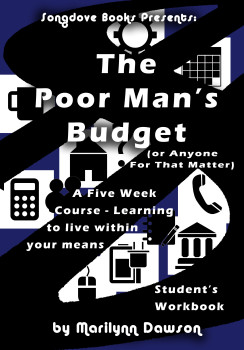 Take a moment to read the following news article, then read on for my rather personal thoughts on this matter:
Take a moment to read the following news article, then read on for my rather personal thoughts on this matter:
http://www.castanet.net/news/Canada/158910/Struggling-to-feed-families
I know about this problem all too well! Because a single parent doesn’t bring in a large income when trying to split their time between being there for their kids and work, not to mention trying to keep house and home together, the idea of a wide-ranging grocery list just doesn’t exist! My 22yr old son doesn’t like peanut butter as a result, because we couldn’t afford it as a married family when he was a toddler. My 20yr old daughter doesn’t like peppers for the same reason. As the article states, some foods are an acquired taste that if not introduced early in a child’s life, may be disliked well into older years until they “try it again for the first time”.
The dance between what the kids like versus what is healthy versus how much is in the budget for food is a hat-trick that many parents fail to navigate wisely. Those of us that do our best to be wise about such a trifecta struggle with the additional reality that as the article says, we can’t waste food. Wasting food is wasting money and that just doesn’t go over very well on a tight budget. There is much truth to the verse in Proverbs 13:23 Much food is in the tillage of the poor: but there is that is destroyed for want of judgment.
When you are trying to judge just how long a head of lettuce can last before you are forced to go out and buy another one, there are times when part of that head is going to go bad for the simple reason of trying to make food stretch as far as possible. A wise grocery shopper will eventually figure out what can last how long before something goes bad and their judgement calls will improve, but a harried, naive, or unobservant shopper will either go through food too quickly to avoid spoilage, or end up with much waste as a result because of poor judgement.
 The trick is in knowing how much your family eats at any given meal, how often they eat it, and how much you need to buy in order to make it till the next pay day. In our household, there are times to this day, where we will run out of something before the next cheque comes in and guess what? We have to go without until that cheque arrives. It’s just the nature of living in a low-income situation.
The trick is in knowing how much your family eats at any given meal, how often they eat it, and how much you need to buy in order to make it till the next pay day. In our household, there are times to this day, where we will run out of something before the next cheque comes in and guess what? We have to go without until that cheque arrives. It’s just the nature of living in a low-income situation.
My kids are grown now, but the challenge remains due to health issues facing the family. These kinds of discussions are important for low-income families to strive over. Understanding wants versus needs does wonders for narrowing the grocery list to a more manageable size that will fit easier into the budget. Understanding that the low-income family must treat food as medicine means there is no room in the budget for cookies, chips, popsicles, pop, energy drinks, snackables, pre-cooked chicken, pre-made salads from the deli, candy, chocolate bars, gum, or gimmicky versions of healthier food choices such as cheese strings, fruit gummies, or fancy crackers. Nutella is skipped for natural peanut butter. Cracker puffs are skipped for wheat thins or rye rounds. Beef Jerky is skipped for no-name chubs of ham or garlic sausage. The less healthy options are reserved for special occasions and even then, not in large amounts or sometimes skipped altogether because funds just don’t allow for the treat. Instead, food is chosen based on a) how many health benefits it can bring to the family, b) how much it costs, and c) everyone will eat it.
The above article refers to this problem as “food insecurity”. I speak for many people in my situation when I say that monthly household income must be spread between rent, groceries, transportation, heat, communication, and clothing with adequate footwear. For that last set, we visit the thrift stores more often than the department stores. Engaging in this budgeting dance has taught me how to balance these six budget points so that what we eat and how we live is not compromised due to living on less than a shoestring budget.
 Because I live in this space, I feel I am qualified to pass on the lessons I’ve learned, the tips and tricks I’ve developed that include eating with allergies (so none of those budget-saving grocery lists stuffed full of chicken will work in this household), and the ways and means I’ve used to tackle debt over the years.
Because I live in this space, I feel I am qualified to pass on the lessons I’ve learned, the tips and tricks I’ve developed that include eating with allergies (so none of those budget-saving grocery lists stuffed full of chicken will work in this household), and the ways and means I’ve used to tackle debt over the years.
If you want to discover how I successfully raised two kids on my own in a two-income town, then check out the details of my course, “The Poor Man’s Budget”. Download the registration sign-up form or fill out the digital form online. Choose which time slot you wish to attend in person or online, and get your hands on the student workbook so you have all your worksheets for the course in one place.
Prices for everything are going up due to the global economic instability we currently face. Let me help you discover ways and means you can use in your own home to make your dollar stretch just a bit farther than you currently think is possible. You won’t regret it.



